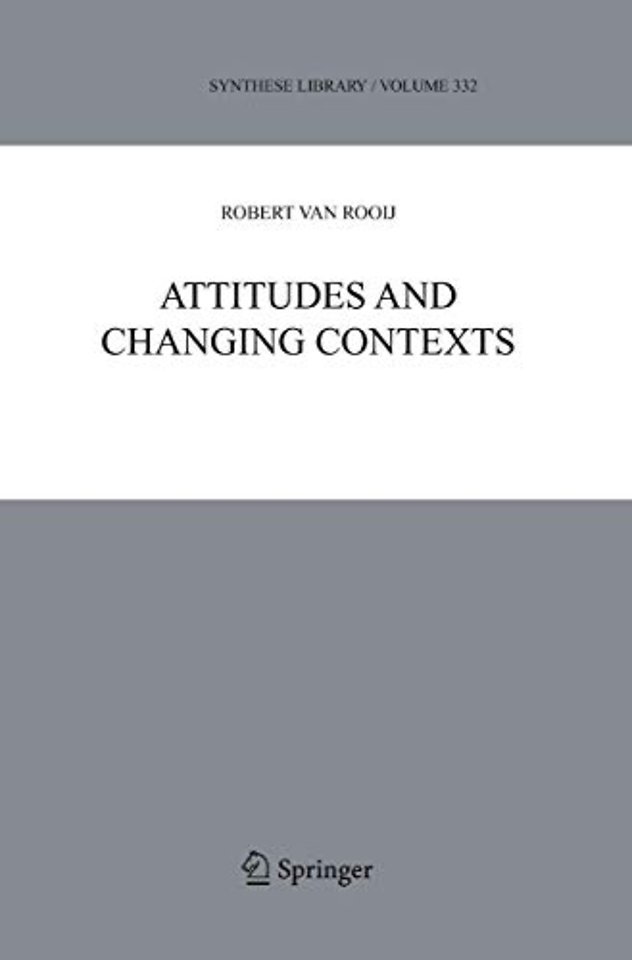Attitudes and Changing Contexts
Samenvatting
In this book, the author defends a unified externalists account of propositional attitudes and reference, and formalizes this view within possible world semantics. He establishes a link between philosophical analyses of intentionality and reference, and formal semantic theories of discourse representation and context change. The relation between belief change and the semantic analyses of conditional sentences and evidential (knowledge) and buletic (desire) propositional attitudes is discussed extensively.
Specificaties
Inhoudsopgave
2 Referential and Descriptive Pronouns. 2.1 Introduction. 2.2 Some classical approaches to anaphora. 2.3 A referential analysis of anaphoric pronouns. 2.4 Comparison with standard dynamic semantics. 2.5 Discourse referents and diagonalisation. 2.5.1 Unclear reference and successful communication. 2.5.2 Bridging the gap by diagonalisation. 2.5.3 The status of possibilities and discourse referents. 2.6 Referential descriptions and propositional concepts. 2.7 Epistemic might. 2.8 Descriptive pronouns. 2.9 Plurals, quantifiers, and functional pronouns. 2.10 Donkeys and the specificity of indefinites. 3 Intentional Identity. 3.1 Introduction. 3.2 The problem of intentional identity. 3.3 Asymmetry explained by descriptive approaches. 3.3.1 Cross-speaker anaphora. 3.3.2 Intentional identity. 3.4 Problems for descriptive approaches. 3.4.1 Cross-speaker anaphora. 3.4.2 Intentional identity. 3.5 Speaker’s reference. 3.6 Speaker as responsible for asymmetry. 3.7 Belief objects and externalism.3.8 Conclusion. 4 Presupposition Satisfaction. 4. 1 Introduction. 4.2 Standard Implementation. 4.3 Presupposition as a propositional attitude. 4.3.1 Motivation. 4.3.2 Formalization. 4.4 Quantification and anaphora. 4.4.1 The binding problem. 4.4.2 Anaphora. 4.5 No cancellation or local accommodation. 4.5.1 Denials. 4.5.2 Modal subordination. 4.6 Conclusion. 5 Conditionals and belief change. 5.1 Introduction. 5.2 The Lewis/Stalnaker analysis of conditionals. 5.3 The Ramsey test analysis . 5.4 The Bayesian approach. 5.5 Triviality. 5.6 Reactions to triviality. 5.6. 1 Imaging versus epistemic revision. 5.6.2 Van Fraassen. 5.6.3 Two kinds of belief change. 5.6.4 Adams. 5.6.5 Lewis. 5.6.6 The preservativity principle. 5.6.7 Gibbard. 5.6.8 A unified account. 5.7 Harper’s principle and iterated revision. 5.8 Gibbard’s problem revisited. 5.9 Subjunctive conditionals again. 5.10 Invalidity as illegitimate change of context. 5.11 The systematicity of context change. 5.12 A variable strict conditional account. 5.13 Change of selection function. 5.14 Conclusion. 6 Some other attitudes. 6.1 Introduction. 6.2 Evidential attitudes and plausibility. 6.2.1 Plausibility. 6.2.2 Evidential verbs. 6.2.3 Knowledge. 6.2.4 Be surprised. 6.3 Doubt. 6.4 Desire. 6.4.1 A Hintikka-style analysis. 6.4.2 Desire as ceteris paribus preference. 6.4.3 Desire as quantitative preference. 6.4.4 A conditional analysis of desires. 6.4.5 Buletic ordering. 6.4.6 Combining belief revision and desirability. 6.4.7 Intention and action. A Two-dimensional counterpart theory. B Context Change Theory. C Pronouns as referential expressions. D The Triviality result. Bibliography. Index.

